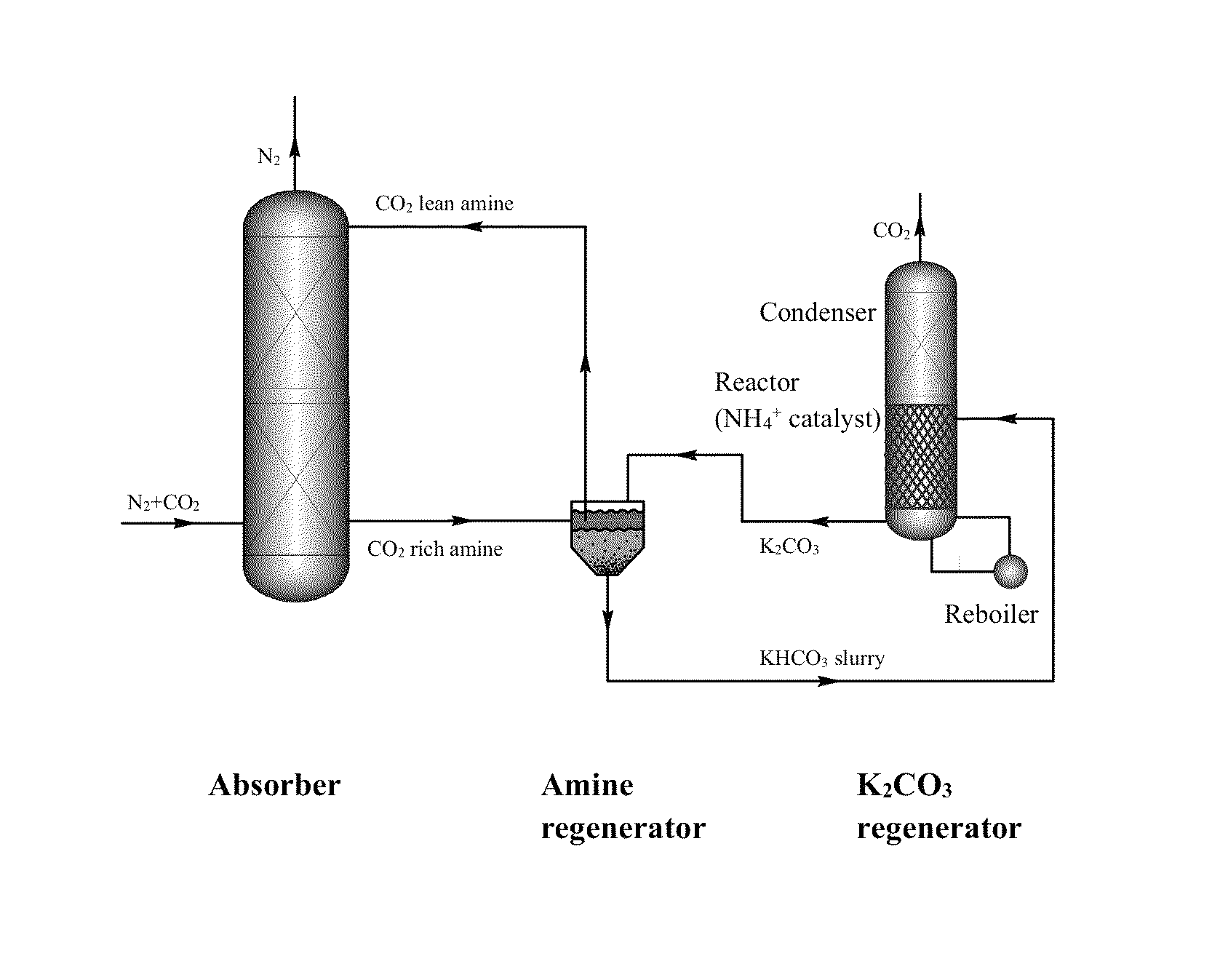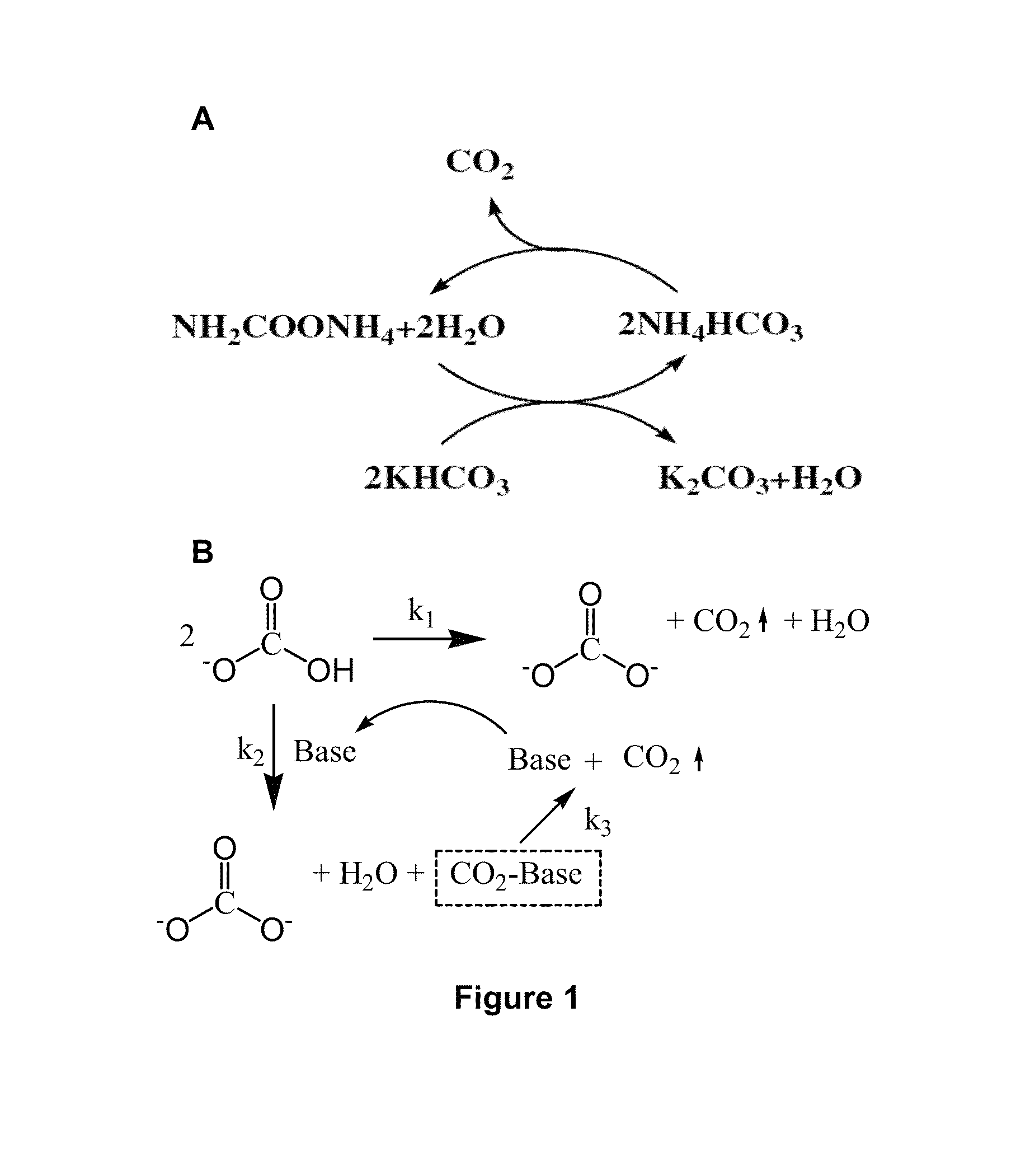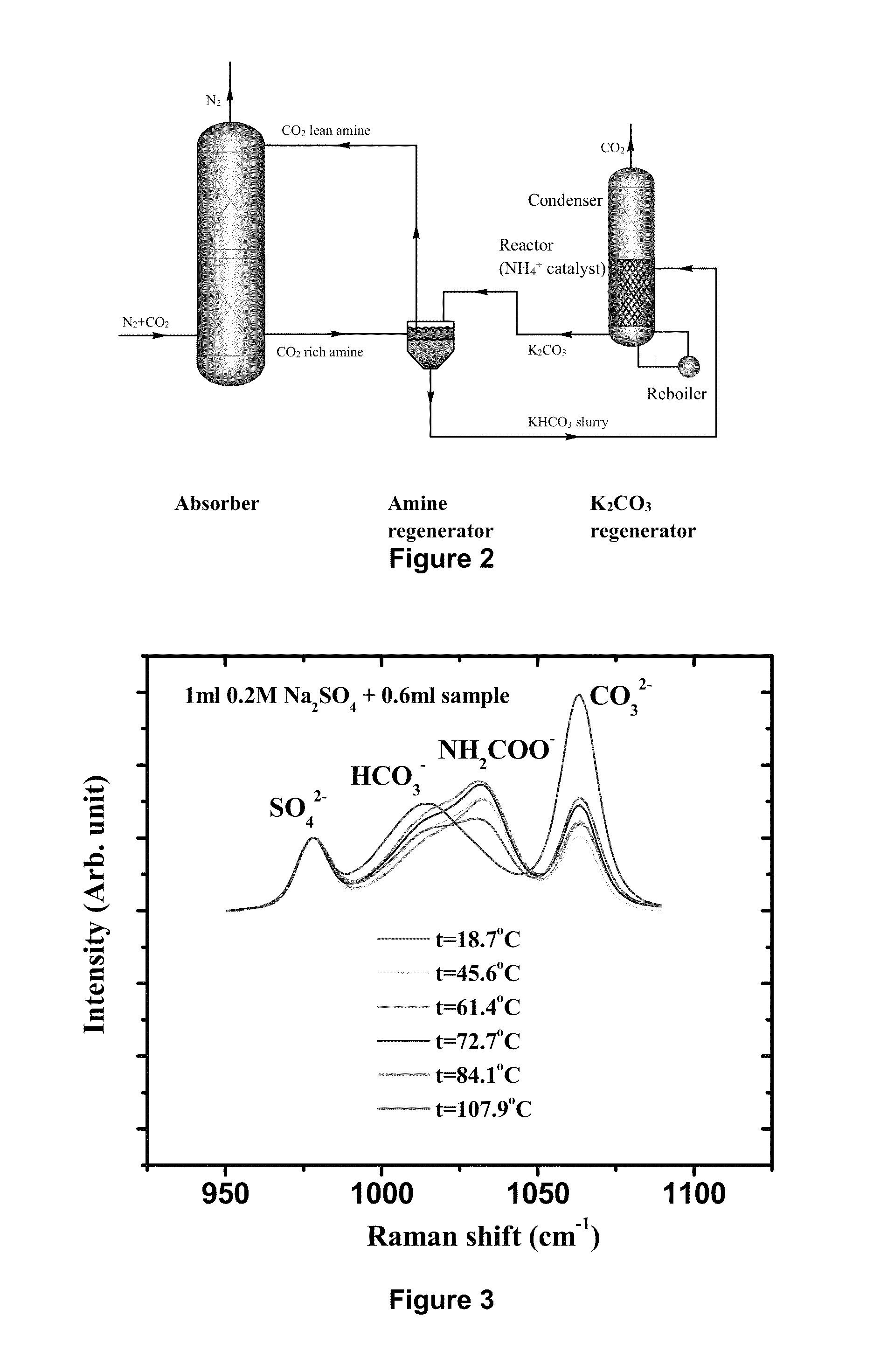Method and system for capturing carbon dioxide and/or sulfur dioxide from gas stream
a gas stream and carbon dioxide technology, applied in the field of emissions reduction, can solve the problems of inability to re-generate heat treatment, carbon sequestration costs, and formation of heat stable salts, and achieve the effects of reducing corrosive, avoiding amine evaporation, and improving absorption kinetics
- Summary
- Abstract
- Description
- Claims
- Application Information
AI Technical Summary
Benefits of technology
Problems solved by technology
Method used
Image
Examples
example 1
Ammonium Carbamate as Rate Promoter
[0110]A novel stripping method for CO2 capture and regeneration from flue gas of the coal-fired power plant is introduced. With some rate promoters, such as ammonium carbamate, organic amines, or physical solvents, potassium bicarbonate slurry was converted to potassium carbonate solution by stripping. Both high temperature (as high as 120° C. by using high-pressure stripper) and low temperature (as low as 90° C. by using hot water) stripping conditions are discussed herein.
[0111]Ammonium carbamate was adopted as rate promoter because of its weak base nature. Briefly, there are three different stripping processes: ambient-pressure stripper only process; high-pressure stripper only process; and ambient-pressure and high-pressure two strippers process.
[0112]Chemical reactions in ambient-pressure stripper. The chemical reactions of ammonium carbamate promoted potassium bicarbonate slurry stripping process in ambient-pressure stripper are list in Equat...
example 2
Amines as Rate Promoter
[0131]Besides ammonium carbamate, amines can be used as the rate promoter. Such amines include AMP and MDEA. AMP is a primary amine, and MDEA is a tertiary amine.
[0132]The chemical structure of AMP is shown as follows:
[0133]
[0134]The chemical structure of MDEA is shown as follows:
[0135]
[0136]20 g Potassium bicarbonate, 10 g water, and 5 g MDEA were mixed together and stripped at 100˜110° C. The regeneration ratio (define as mole amount of carbon dioxide release / mole amount of total releasable carbon dioxide) vs. time characteristics of 20 g-potassium-bicarbonate-10 g-water-5 g-MDEA system, 20 g-potassium-bicarbonate-10 g-water-5 g-AMP system and 20 g-potassium-bicarbonate-10 g-water system are shown in FIG. 7.
[0137]It can be seen that, the potassium bicarbonate slurry with MDEA as promoter exhibited a little higher stripping rate and regeneration ratio than the potassium bicarbonate slurry with no promoter; and the potassium bicarbonate slurry with AMP as prom...
example 3
Physical Solvents as Rate Promoter
[0142]Besides ammonium carbamate and organic amines, physical solvents were also adopted as rate promoter. 2-Ethyl-1-hexanol (EH), a kind of physical solvent for CO2, was selected for rate promotion investigation. The detailed data for 2-ethyl-1-hexanol promoted KHCO3 slurry stripping process, and KHCO3 slurry process without any promoter, are shown in Table 6.
[0143]
TABLE 6Data of KHCO3 slurries stripping system with and without2-ethyl-1-hexanol.Temp. in Stripper (° C.)110.3109.8KHCO3 added (g(mole))12.52 (0.12) 12.50 (0.12) H2O added (g(mole))10.01 (0.56) 10.01 (0.56) 2-Ethyl-1-hexanol added5.00 (0.04)0 (0)(g(mole))pH @ room temperature (° C.)10.96@24.911.00@26.1K2CO3 produced (g(mole))4.56 (0.03)4.41 (0.03)KHCO3 precip. (g(mole))4.20 (0.04)4.08 (0.04)CO2 produced (g(mole))1.45 (0.03)1.40 (0.03)KHCO3 (kg / kg CO2)8.628.91Water (kg / kg CO2)6.907.132-Ethyl-1-hexanol (kg / kg CO2)3.440Sensible heat (kJ / kg CO2)1308.90481344.27Latent heat (kJ / kg CO2)310.5832...
PUM
| Property | Measurement | Unit |
|---|---|---|
| temperature | aaaaa | aaaaa |
| pressure | aaaaa | aaaaa |
| temperature | aaaaa | aaaaa |
Abstract
Description
Claims
Application Information
 Login to View More
Login to View More - R&D
- Intellectual Property
- Life Sciences
- Materials
- Tech Scout
- Unparalleled Data Quality
- Higher Quality Content
- 60% Fewer Hallucinations
Browse by: Latest US Patents, China's latest patents, Technical Efficacy Thesaurus, Application Domain, Technology Topic, Popular Technical Reports.
© 2025 PatSnap. All rights reserved.Legal|Privacy policy|Modern Slavery Act Transparency Statement|Sitemap|About US| Contact US: help@patsnap.com



